Product developers frequently ask us whether elastic straps can substitute for elastic webbing in their designs. This material confusion often leads to performance issues and unnecessary manufacturing costs. At Anmyda, we provide custom webbing solutions and engineering consultation to help developers select the optimal elastic material for their specific application requirements.
No, elastic straps are not the same as elastic webbing. Elastic webbing is a woven fabric strip with consistent width and superior load distribution, while elastic straps are typically narrower cord-like materials with different stretch characteristics and manufacturing processes.
We’ll examine the construction, materials, and performance of both elastic products to help you choose the best option for stretch, durability, and load capacity.
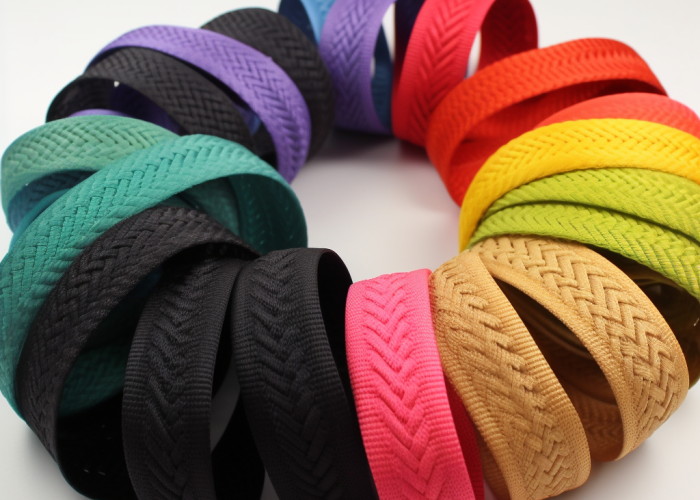

Webbing manufacturing expert with 15+ years of experience helping product developers build high-performance straps for industrial, medical, and outdoor use.
Elastic straps and elastic webbing share the same base materials but differ in processing stage and readiness for use. Elastic webbing is the bulk stretchable textile, while elastic straps are pre-cut, finished components made from that webbing for specific applications.
Quick Comparison:
From a manufacturing standpoint, elastic webbing is the input for custom strap fabrication. It’s available in knitted, woven, and braided constructions, with controlled elongation properties. Elastic straps are ready-to-use outputs, often featuring hooks, Velcro, sewn ends, or molded components.
Both materials may meet OEKO-TEX®, ISO 105, or REACH compliance, but straps often undergo additional end-use testing for safety-critical industries like medical, automotive, or wearable tech.
Design Takeaway: Use elastic webbing when sourcing materials for manufacturing. Choose elastic straps for plug-and-play integration into consumer or industrial products. Understanding this distinction streamlines procurement, compliance planning, and cost forecasting.
Elastic webbing and elastic straps use identical base manufacturing processes until the finishing stage, where straps require additional cutting, edge treatment, and assembly operations. Webbing production stops at quality inspection and rolling, while strap manufacturing adds 3-5 secondary processes that transform continuous webbing into discrete components.
Manufacturing Process Comparison:
From our manufacturing experience, webbing production focuses on maintaining consistent tension and material properties across long runs. Strap manufacturing requires precise cutting tolerances (±2mm), edge finishing to prevent fraying, and hardware attachment with specific torque requirements.
The additional processing steps for straps include ultrasonic cutting for clean edges, bar-tacking for reinforcement, and hardware crimping or sewing. These operations require specialized equipment and skilled operators but enable immediate product integration.
Design Takeaway: Choose webbing for high-volume, cost-sensitive applications where you can handle finishing in-house. Select finished straps for lower volumes or when you lack secondary processing capabilities. Manufacturing method impacts unit costs, minimum orders, and delivery timelines.
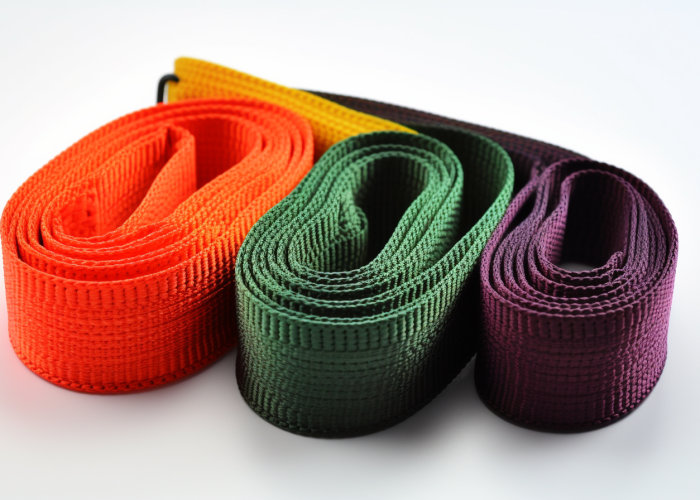
Elastic webbing manufacturing must comply with chemical safety regulations, performance testing standards, and application-specific certifications that vary by end-use industry. Primary requirements include textile safety standards for general use, plus specialized regulations for medical, automotive, or military applications.
Compliance Framework:
Chemical compliance testing includes restricted substance screening for heavy metals, formaldehyde, and banned dyes. Performance validation requires calibrated testing equipment and documented procedures for stretch, recovery, and durability measurements.
Specialized applications demand additional certifications: medical device registration for healthcare components, automotive OEM approval for vehicle applications, and military specification compliance for defense contracts. These require enhanced documentation, supplier audits, and ongoing compliance monitoring.
Design Takeaway: Identify all applicable standards early in material selection to avoid costly compliance delays. Work with manufacturers holding relevant certifications for your target industry. Factor testing costs and timelines into project budgets, especially for regulated applications.
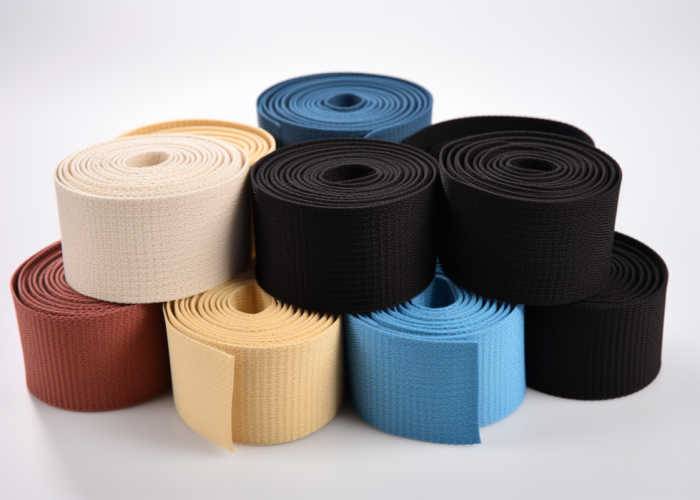
Elastic webbing and elastic straps provide identical stretch capacity since straps inherit the exact stretch properties of their source webbing material. Stretch performance depends entirely on the webbing’s fiber composition and construction method, not whether it’s sold as continuous webbing or finished straps.
Stretch Performance by Material Type:
Stretch capacity is determined during webbing production through fiber selection, yarn twist, and weaving tension. A 1-inch polyester elastic webbing providing 20% stretch will deliver identical 20% stretch when converted to elastic straps, regardless of length or hardware attachment.
Finishing processes may create slight performance variations: sewn end reinforcements can reduce effective stretch by 5-8% at attachment points, while hardware crimping may limit stretch to 90% of material capacity depending on fastener design.
Design Takeaway: Specify stretch requirements based on webbing material properties, not finished form. Test stretch performance on webbing samples before committing to strap production. Consider how end attachments and hardware may constrain the effective stretch in your final application.
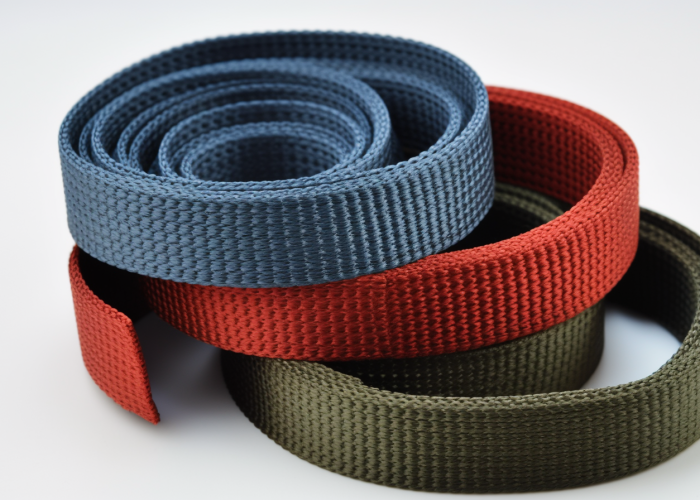
Elastic webbing significantly outperforms elastic straps for heavy-duty applications due to superior load distribution, wider surface contact, and enhanced durability under repeated stress cycles. Webbing’s flat construction distributes forces across its entire width, while straps concentrate stress at attachment points, leading to accelerated wear in demanding environments.
Heavy-Duty Performance Comparison:
From our manufacturing experience, heavy-duty applications like cargo securing, industrial lifting, and safety restraints require woven polyester or nylon webbing with tensile strengths exceeding 2,000 lbs per inch width. These materials maintain 90% strength retention after 10,000 stretch cycles, compared to 70-80% retention for equivalent elastic strap configurations.
Military and industrial specifications typically mandate webbing over straps for critical applications. MIL-W-17337 webbing provides verified load ratings, UV resistance, and temperature performance from -65°F to +180°F with documented safety factors.
Design Takeaway: Choose elastic webbing for applications involving repetitive loading, environmental exposure, or safety-critical functions. Reserve elastic straps for lighter-duty applications where convenience and quick attachment outweigh maximum durability requirements. Always verify load ratings and safety factors for your specific application.
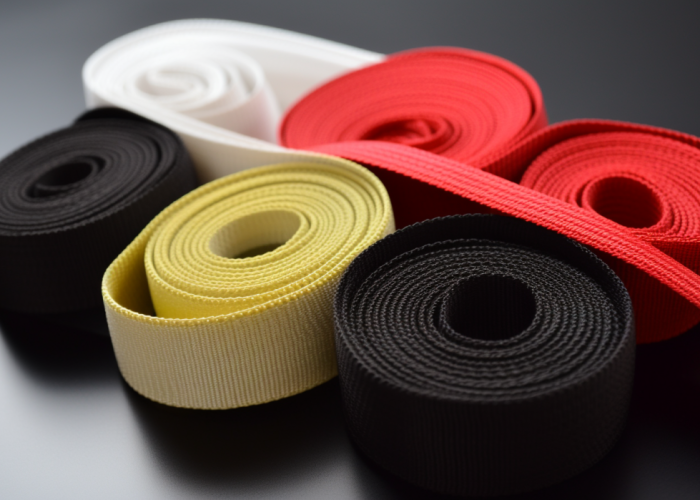
Elastic webbing typically costs 30-50% less per linear foot than equivalent elastic straps due to reduced manufacturing complexity and bulk purchasing advantages. However, total project costs depend on your secondary processing requirements, volume needs, and whether you need immediate assembly-ready components.
Cost Structure Breakdown:
Volume economics favor webbing for quantities above 500 linear feet, where bulk pricing and reduced handling costs provide significant savings. Strap purchasing makes economic sense for smaller quantities, prototype development, or when you lack in-house finishing capabilities.
Hidden cost factors include inventory carrying costs (webbing requires more storage space), waste from cutting operations (5-10% material loss), and quality control requirements for in-house finishing operations.
Design Takeaway: Calculate total cost of ownership including processing, inventory, and labor requirements. Webbing offers material cost advantages for high-volume production. Straps provide convenience and predictable unit costs for lower volumes or when manufacturing flexibility is limited.
Custom elastic webbing can be manufactured in widths ranging from 1/8 inch to 12 inches, with standard increments every 1/8 inch up to 2 inches, then every 1/4 inch for wider specifications. Manufacturing constraints vary by construction type, with woven elastic offering the widest range and specialized constructions having specific limitations.
Width Availability by Construction:
Manufacturing considerations affect width selection: narrow webbing (under 1/2″) requires specialized looms and higher per-yard costs. Wide webbing (over 6″) needs enhanced quality control to maintain consistent stretch properties across the full width and may require custom dyeing processes.
Industry-standard widths include 1/2″, 3/4″, 1″, 1.5″, and 2″ which offer reduced tooling costs and shorter lead times. Non-standard widths typically add 15-25% to material costs and 2-3 weeks to delivery schedules due to custom setup requirements.
Design Takeaway: Select standard widths when possible to optimize cost and delivery time. Custom widths justify the premium when they eliminate secondary processing or provide significant performance advantages. Consider width tolerance requirements (typically ±1/32″) for precision applications.
Elastic straps are finished products made from elastic webbing material, not different materials. For bulk manufacturing and cost efficiency, choose elastic webbing. For ready-to-use components with hardware attachments, select elastic straps. We provide both solutions with custom specifications and engineering consultation to optimize your material selection and product performance.
Yes, elastic webbing can be manufactured to meet consumer safety standards including OEKO-TEX Standard 100 for textiles and CPSIA for children’s products. We provide chemical testing certificates, restricted substance compliance, and biocompatibility documentation for skin-contact applications. Latex-free options are available for allergy-sensitive product lines requiring hypoallergenic materials.
Polyester-based elastic webbing outperforms other materials for outdoor applications, maintaining flexibility from -40°F to +180°F with excellent UV resistance. Unlike natural rubber that degrades in sunlight, solution-dyed polyester elastic retains 95% strength after 1,000 hours UV exposure. This makes it ideal for outdoor gear, marine equipment, and automotive applications.
Yes, but safety-critical applications require proper engineering analysis and certified load ratings. Our woven polyester elastic supports 2,000+ pounds per inch width with documented safety factors. We provide engineering consultation to help specify appropriate materials, safety margins, and testing requirements for your liability and insurance considerations.
Custom elastic webbing requires 500-1,000 yard minimums with 4-6 week lead times for development and 2-3 weeks for production runs. Standard widths and colors reduce minimums to 100-300 yards with 2-3 week delivery. We offer sampling programs and prototype quantities to support your product development timeline and testing requirements.
We provide complete compliance documentation including OEKO-TEX certificates, ASTM test reports, material safety data sheets, and lot traceability records. For regulated industries, we supply FDA registration documents for medical products, automotive compliance certificates, and military specification approvals. All documentation supports your product certification and regulatory approval processes.
Our elastic webbing maintains 90-95% stretch capacity after 10,000 cycles in typical consumer applications. Polyester/spandex blends provide 3-5 year service life in apparel and accessories, while industrial-grade options last 5-10 years in demanding applications. We provide accelerated aging test data to help predict performance in your specific use environment.